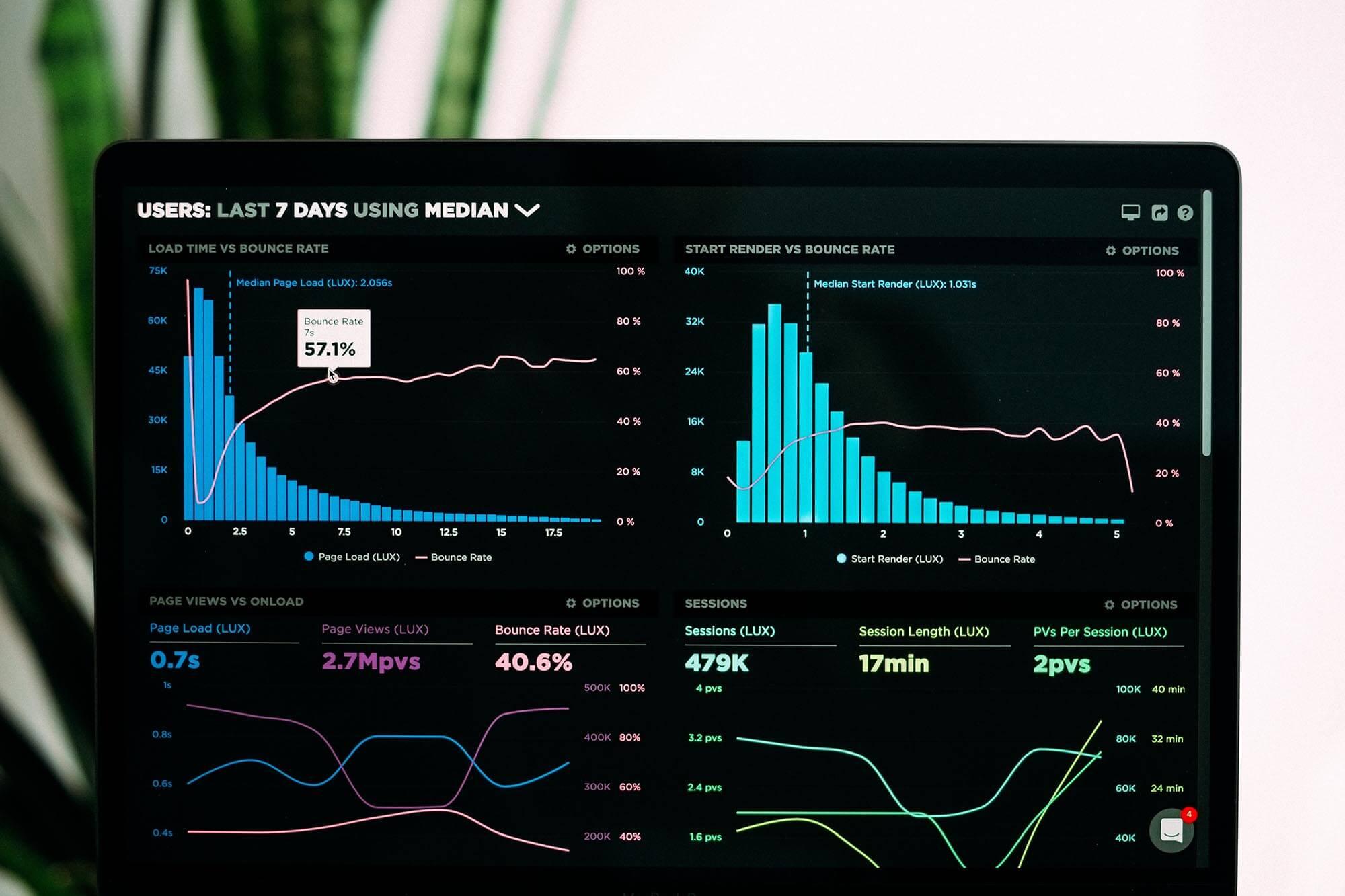How to Calculate Landing Page Conversion Rate

You can calculate the conversion rate of your landing page with a simple formula. Divide the total conversions by landing page visitors to get your conversion rate.
However, businesses undertake a more comprehensive process to calculate landing page conversion rates. It starts with a clear understanding of goals and evaluating your current conversion rate.
In this blog, we will explore the steps you can take to determine your conversion rates. Regardless of your industry, you can use the approach for all landing pages.
But first, let’s discuss a few words about the landing page conversion rate and why you should focus on it.
The Definition of Landing Page Conversion Rate

The conversion rate of a landing page refers to the percentage of visitors who completed a desired action. It can also be a goal you set for your landing pages, like downloading an eBook or joining an email list.Your conversion rate indicates how effectively your landing pages convert visitors into leads, subscribers, or leads. Tracking your conversion rate lets you understand if your landing page served its intended purpose.
Why You Should Focus on Landing Page Conversion Rates
Understanding landing page conversion is crucial to your business success. You can also generate deep insights by calculating your conversion rate.
Below are a few reasons why you must be aware of your conversion rates:
Your conversion rate acts as a reliable KPI to evaluate the effectiveness of your marketing efforts.
You can understand how many people are completing your desired action.
You can determine if your landing page aligns with your business objectives.
Moreover, you can identify areas of improvement by gauging your conversion rates. You can zero in on potential bottlenecks and implement corrective measures to improve user experience.
Additionally, you can enhance your conversion funnel and optimize your marketing strategies.
Most importantly, you can calculate your ROI and allocate resources optimally. You can also determine the effects of your campaigns on your landing pages.
It also allows you to achieve higher conversions and drive business growth.
How to Calculate the Conversion Rate of Landing Pages
We will now explore the steps to measure landing page conversion rate. You can get a clear picture of the process to implement for your business.
Define Goals and Conversions
A landing page is made to achieve specific goals. Therefore, you must establish clear goals before considering measuring your performance.
A few examples of common goals are:
Generate more leads
Boost newsletter subscriptions
Promote your products
Increase sales
Gather participants for an event
Your goals should align with your overall marketing strategy.
It is time to define what a conversion is for you after you determine your goals. It can be any desired action you want site visitors to perform.
For example, you may count a purchase as a conversion to drive sales. Or, submitting a contact form could be a conversion if you want to generate leads.
Most importantly, set SMART goals that are:
Specific
Measurable
Achievable
Relevant
Time-bound
Determine Total Visitors
You must be aware of the total number of people who visit your landing page within a specific period. It helps you calculate the percentage of people who convert.
Hosting providers offer in-house analytics tools to track your landing page visitors. However, you should use advanced tools like Google Analytics to gain deeper insights.
These tools also allow you to:
Set up specific goals
Define your conversions
Track conversions
Access session recordings
Below are a few best practices to measure your performance accurately:
Install the tracking code of your analytics tools on your landing page correctly.
Exclude traffic from your organization to generate actual results.
Use filters to exclude bot or spam traffic that can skew your measurement efforts.
Monitor your data regularly and find out reasons for any unexplained changes.
An accurate visitor count will make the rest of the process easy.
Improve Landing Page Conversion Tracking

You must optimize your top landing pages to track data accurately on your analytics tool. It will help you monitor and measure visitors who complete your desired action.
You will get a pixel or script from your analytics tool. It is possible to place these scripts on particular conversion elements on your landing page.
For example, you can place a script on a form submission confirmation page. It will send a signal to your analytics tool once someone converts.
Set up your tracking mechanism on your landing pages for accurate measurement. Below are a few tips to obtain the best results:
Test your conversion tracking techniques after implementation to ensure they are working accurately.
Review your data and validate it regularly.
Debug and troubleshoot any issues immediately.
Setting up your conversion tracking allows you to gather reliable data. You can trust your measurement and calculate your conversion rate confidently.
Calculate Your Landing Page Conversion Rate
A simple formula lets you measure your landing page conversion rate: Conversion rate = Conversions / Total visitors x 100
You can use this formula to find out the percentage of visitors who converted or completed your defined desired action.
Let’s take an example to paint a clear picture.
Imagine your landing page gets 1,000 visitors in a month. Among them, 50 performed the goal set by you, such as downloading an eBook.
Therefore, your conversion rate would be: 50 / 1,000 x 100 = 5%
You can use this formula to calculate conversion rates for any landing page and campaign.
Analyze Conversion Rate Performance
Determining your landing page conversion rate is only a part of the equation. You must analyze and interpret your results if you want to improve conversions or boost your revenues.
Higher conversions mean your landing pages are performing well. However, lower conversions indicate you may need to adopt landing page optimization services.
It is necessary to consider several factors while interpreting your conversion rate. For example, the lowest-converting industry will always have low conversion rates.
The ideal conversion will depend on your industry and factors like:
Your landing page design, including page speed and mobile optimization
Your established goals
Nature of your products
You have room for improvement if your conversion rate is below the industry average. Additionally, compare your current rate with your past conversion rates. It lets you determine if your page is performing below or above expectations.
You can also understand the strengths and weaknesses of your landing pages. Moreover, your insights will guide landing page optimization efforts.
Conduct A/B Testing

You are now aware of your average conversion rates. Next, it’s time to start optimizing landing pages to increase conversion rates.
A/B testing helps you test different variations of your landing pages to determine what clicks best with your target audience.
The variations can be titles, copies, call-to-action texts, color schemes, and layouts.
Create landing pages with variations in these elements and keep everything else the same. Then perform A/B testing to find out the impact of every variation.
You can split your web traffic to send visitors to different versions of your landing pages. Monitor the change in conversions to measure the impact of each variation.
After that, you should:
Analyze your test results to identify the best variations
Determine if the impact makes statistical significance
Implement the variations to create the best landing pages
Document the changes so that you have a reference for the future.
Try Conversion Rate Optimization (CRO)
CRO improves the performance of your landing pages and engages your target audience for more conversions. Your research and insights give you an idea of areas to focus on to boost conversions.
Below are a few ways to try:
Capture attention with crisp and high-quality images
Write compelling headlines to communicate your products’ value proposal
Develop persuasive copy that encourages action
Create a sense of urgency or exclusivity throughout your landing pages
Use interactive and visual elements like video content
Display social proof like testimonials and media coverage on your web pages
Additionally, enhance your user experience and make your site navigation intuitive. Your pages should avoid clutter and make the main information stand out.
Mobile-friendliness is another way to improve website conversion rates. You can engage and retain mobile audiences with a responsive design and quick loading times.
Also, experiment with the placement and text of form submission boxes, download buttons, and so on.
Monitor Conversion Rate Changes
The same tools you used to research user behavior let you track your new conversions. You can use Google Analytics and similar tools to monitor and track your landing page conversions.
Measure your conversion rate at regular intervals, like weekly, monthly, or quarterly. Consider your goals and objectives to find a suitable interval for your business.
The insights you gather from your monitoring will help you make informed decisions. You can improve your average conversion rate and become a pro at converting visitors.
It is necessary to continuously adjust your CRO techniques to keep achieving the desired outcome. You can also test different strategies, elements, and approaches to improve conversions as a continuous process.
Most importantly, constant monitoring lets you identify patterns that help you capitalize on the right opportunities. You can push your offers or campaign at the right time to get the best results.
Manage External Factors
External factors can influence the conversion of your landing pages. Such factors include market trends, competitors, consumer preferences, and more.
It is imperative to stay aware and adjust your CRO process accordingly to drive the expected results.
Traffic Sources, Demographics, and Seasonality

Various traffic sources interact with your brand in different manners. Organic, paid, social media, referral links – each category comes with its nuances.
Additionally, demographic factors like age, gender, location, and income impact how your landing pages convert users.
Moreover, seasonal trends like holidays or major events can influence conversions.
You must refine your conversion optimization and tailor your messages based on these factors. Use insights from customer data and demographics to resonate with your audience.
Stay informed of changing preferences to keep driving your conversion rates.
Continuously Improve Conversion Rate
A mindset of continuous improvement and optimization is necessary to maintain a high conversion rate. It is an ongoing process rather than a one-time task.
You can remain competitive by continuously evaluating your important metrics to track conversions. Moreover, gather feedback and collect data from different sources to gain data-driven insights.
Most importantly, cultivate a culture of experimentation and innovation in your organization. Follow a systematic approach for your optimization efforts and standardize the process.
For example, set up regular review cycles and checkpoints to stay updated on your progress.
Additionally, ensure your strategies align with your evolving business goals and market trends. Always be proactive in identifying shifts in user behaviors and refine your strategy to stay relevant.
Seek Professional CRO Assistance
To start, you can calculate your landing page conversion rate using our simple formula. However, you must track your total visitors and define your conversions beforehand.
Next, you can track your conversions to find areas to improve your landing page performance. It is a multifaceted process, from analyzing your conversions to managing external factors.
You can read more about optimizing your landing pages by clicking “here.”
Not all businesses have the in-house talent or resources to implement conversion optimization. Landing page companies with professional landing page design services can help you optimize your conversions. They can boost your conversion rate and get maximum ROI on your landing page price.
We are an experienced tech agency with professional CRO services. Contact us today to learn how we can help you boost your revenues.
